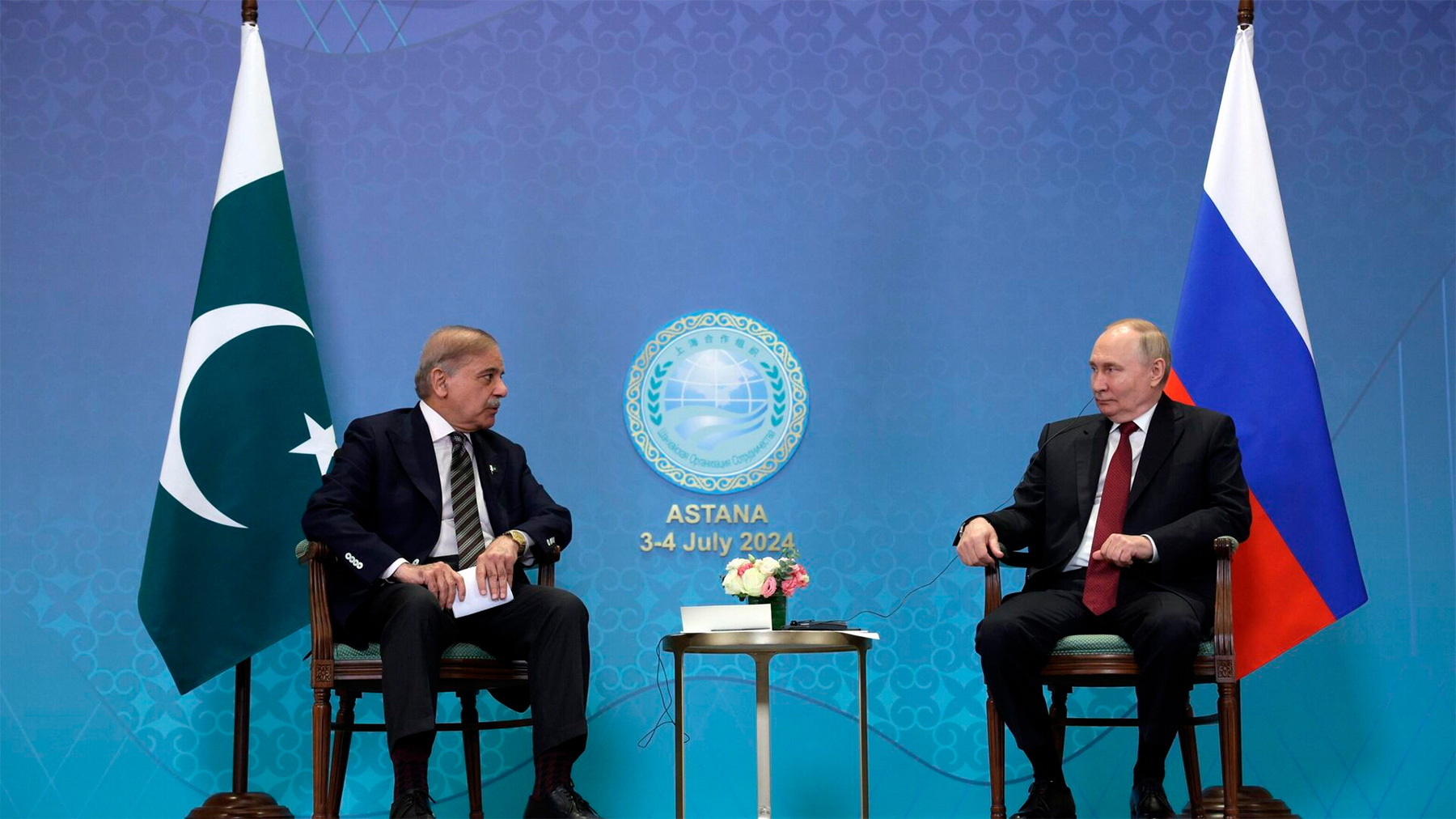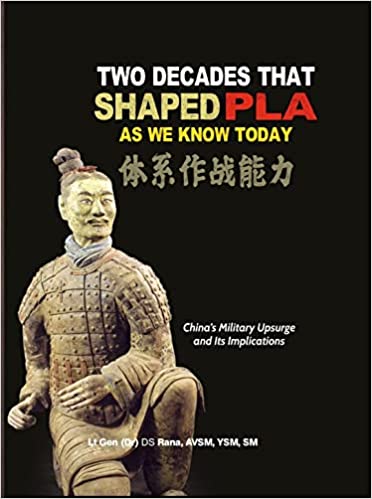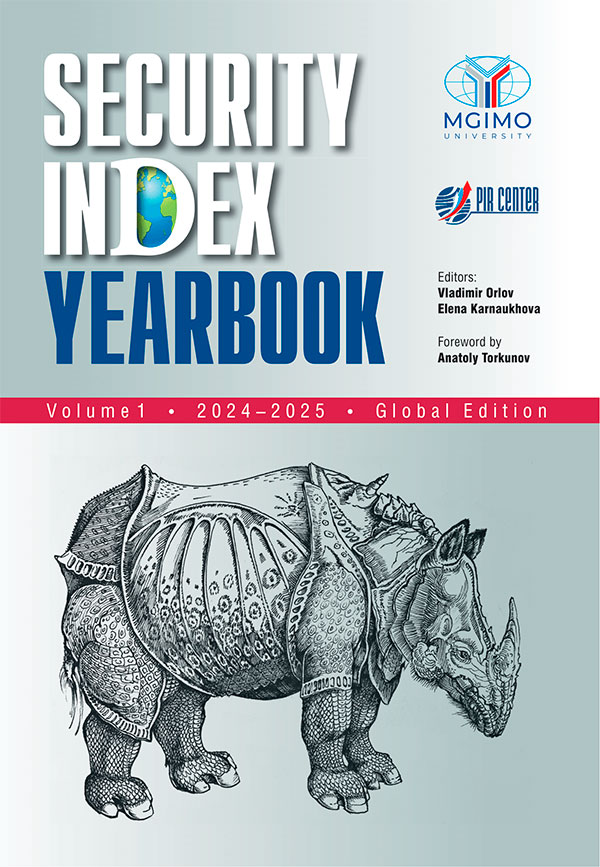BRICS and Pakistan — Assessing Opportunities & Challenges
(votes: 1, rating: 5) |
(1 vote) |
Research Associate, Institute of Strategic Studies Islamabad (ISSI)
Research Fellow, Institute of Strategic Studies Islamabad (ISSI)
This following article offers a comprehensive analysis of the XV BRICS Summit, set against the backdrop of escalating bloc politics and dynamic shifts in international relations. The Summit, hosted in Johannesburg from August 22 to August 24, 2023, defied prevailing skeptical forecasts from media, policy, and academic sectors, emerging as a pivotal convergence point for BRICS nations. Central to this study is the exploration of the Summit's outcomes, particularly the consensus on utilizing national currencies in trade and inviting new members, signaling a strategic expansion and diversification of BRICS. Additionally, the paper delves into the evolutionary trajectory of BRICS, assessing its growing influence in global economic and geopolitical arenas. A focal point of this analysis is the potential for Pakistan's integration into BRICS, examining the prospective benefits and challenges, and offering strategic recommendations for Pakistan's approach. This study aims to elucidate the implications of the XV BRICS Summit's developments for emerging economies and the evolving landscape of international cooperation.
Introduction
Amidst the complexities of contemporary international affairs, characterized by intensifying bloc politics and fluid dynamics, the XV BRICS Summit in Johannesburg, conducted from August 22 to August 24, 2023, emerged as a pivotal event. This summit, contrary to widespread skeptical predictions by various media, policy, and academic entities, marked a significant moment for BRICS. This study aims to dissect the summit's outcomes, its broader implications, as well as the potential benefits and challenges for Pakistan's possible integration into this bloc.
Contrary to most predictions, the XV BRICS Summit proved to be a water-shed moment for the group, where countries with diverging views and interests in multiple domains were able to achieve an across-the-board consensus on two major agenda points (among others) of the Summit: a) positive movement of member states towards the use of national currencies in trade and financial transactions among group members and with other nations of the “Global South” and b) agreement on the expansion of the group into a broader platform by inviting new member states into BRICS.
The outcomes of the XV BRICS Summit, especially the ones which saw invitations being extended to six (6) new countries to join the group and numerous important commitments made in the Johannesburg Declaration, such as the ones related to collective economic growth, sustainable development and inclusive multilateralism, have given hope to several emerging economies in the world, including Pakistan, who are seeking for effective mechanisms for the promotion of multilateral cooperation, international law, equality and inclusive, collective development.
However, before delving into other dynamics regarding BRICS, it is pertinent to explore the gradual evolution of the group, in order to properly understand the much-discussed informal organization of emerging economies.
Evolution of BRICS
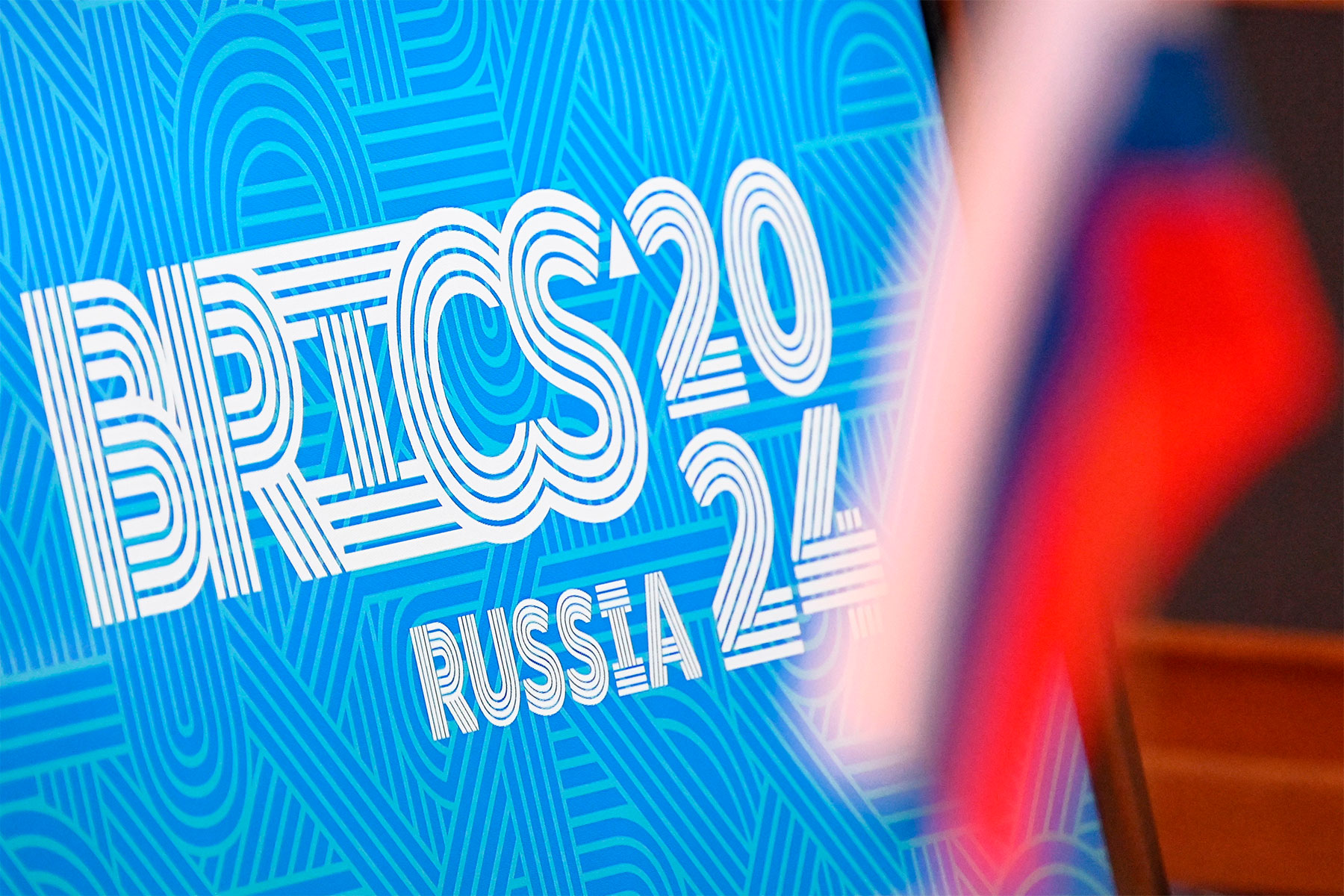
BRICS Expansion and Prospects for BRICS Cooperation in the Digital Economy
As mentioned earlier, BRICS is an informal grouping of emerging economies. It is a denotative acronym of its founding/core member states namely, Brazil, Russia, India, China and South Africa. The acronym was first introduced by Jim O'Neill (a British economist, previously with Goldman Sachs, now Chatham House) in 2001, in his report “Building Better Global Economic BRICs.”
In this report, the author predicted the collective domination of the global economy by BRIC countries by the year 2050.
On September 20, 2006, in New York, the first Brazil, Russia, India and China "BRIC" Ministerial Meeting was conducted on the sidelines of the United Nations General Assembly (UNGA) session. The meeting was attended by the defense minister of India, the foreign ministers of China, Brazil, and Russia, and they all indicated interest in enhancing multilateral cooperation.
The inaugural BRIC “Summit” took place in Russia on June 16, 2009. Following the conference, BRIC leaders released a joint statement outlining the group's objectives as well as strategies for addressing the world's financial and economic problems arising in the aftermath of the global financial crisis of 2008.
On December 24, 2010, South Africa joined BRIC after formally accepting the invitation (initiated by China) and transformed the group into BRICS. At that time, South Africa was the only other member state admitted into the group and the sole country from Africa.
Furthermore, the New Development Bank (NDB), the only formal institution of BRICS was established in 2014, after signing of the agreement to establish NDB during the VI BRICS Summit by member states. Prior to this, the proposal for the establishment of NDB was presented by BRICS leaders in 2012 and its feasibility was agreed upon by them in 2013.
Mr. K. V. Kamath was appointed as the first President of the NDB in 2015. The bank received its first paid-in capital from member states in 2016 and became fully operational that year.
The NDB is permanently headquartered in Shanghai, China since 2021, with regional and sub-offices in different locations around the globe including in Africa, Asia, Eurasia and South America.
Moreover, as a major milestone, the NDB approved its first non-USD (United States Dollar - $) loans denominated by Euro, Chinese Yuan, South African Rand and Swiss Franc in 2019. In 2021, Bangladesh, Egypt, United Arab Emirates (UAE) and Uruguay were admitted as members of the NDB.
The NDB initially authorized a capital of US$ 100 billion. The NDB's founding members in the beginning subscribed $50 billion USD which consisted of $ 10 billion USD of paid-in funds while $ 40 billion USD as callable capital. (See Figure 1).
Figure 1. NBD member shares and subscribed capital (million USD)
Source: New Development Bank, 2023 [1]
In 2018, approximately nine years after its first Summit in 2009, South Africa proposed a further expansion of BRICS. However, serious discussions about expansion within the group commenced in 2022 during the XIV BRICS Summit in Beijing, which eventually became one of the main agendas of the XV Summit in 2023.
According to the 2022 International Monetary Fund (IMF) statistics, BRICS members held a share of 31.58% of the total Global Gross Domestic Product (GDP), based on Purchasing Power Parity (PPP). (See Figure 2).
Figure 2. BRICS member states collective GDP based on PPP
Source: International Monetary Fund, 2023 [2]
BRICS member states (before expansion) represented 41.25% of the total world's population. Until 2022, its global GDP share was 32%, which is expected to grow to 40% by the year 2040.
The BRICS Presidency keeps on shuffling each year between member states. In 2023, South Africa held the BRICS Presidency and was responsible for hosting the XV BRICS Summit. As of now, BRICS has increased the number of its members to eleven.
Who Joined BRICS So Far?
On August 24, 2023, it was announced during the press conference by BRICS members during the XV BRICS Summit, to invite six (6) countries to join BRICS, taking the total number of its members from five to eleven, namely: Argentina, Egypt, Ethiopia, Iran (IRI), Saudi Arabia (KSA) and the UAE.
Membership of these six countries took into effect on January 01, 2024. The five founding BRICS members congratulated the new members and expressed confidence in the further development of the group with the inclusion of its new members.
Chinese President Xi Jinping termed the expansion as "historic and a new starting point for BRICS cooperation.”
South African President Cyril Ramaphosa stated that BRICS countries have reached an agreement on the guiding principles of the BRICS expansion process and noted that interests of other countries in building partnership with BRICS is valued by its members. According to him, over forty countries and regions showed interest in joining BRICS, and 22 of them formally applied to join in 2023.
State of Play Within BRICS
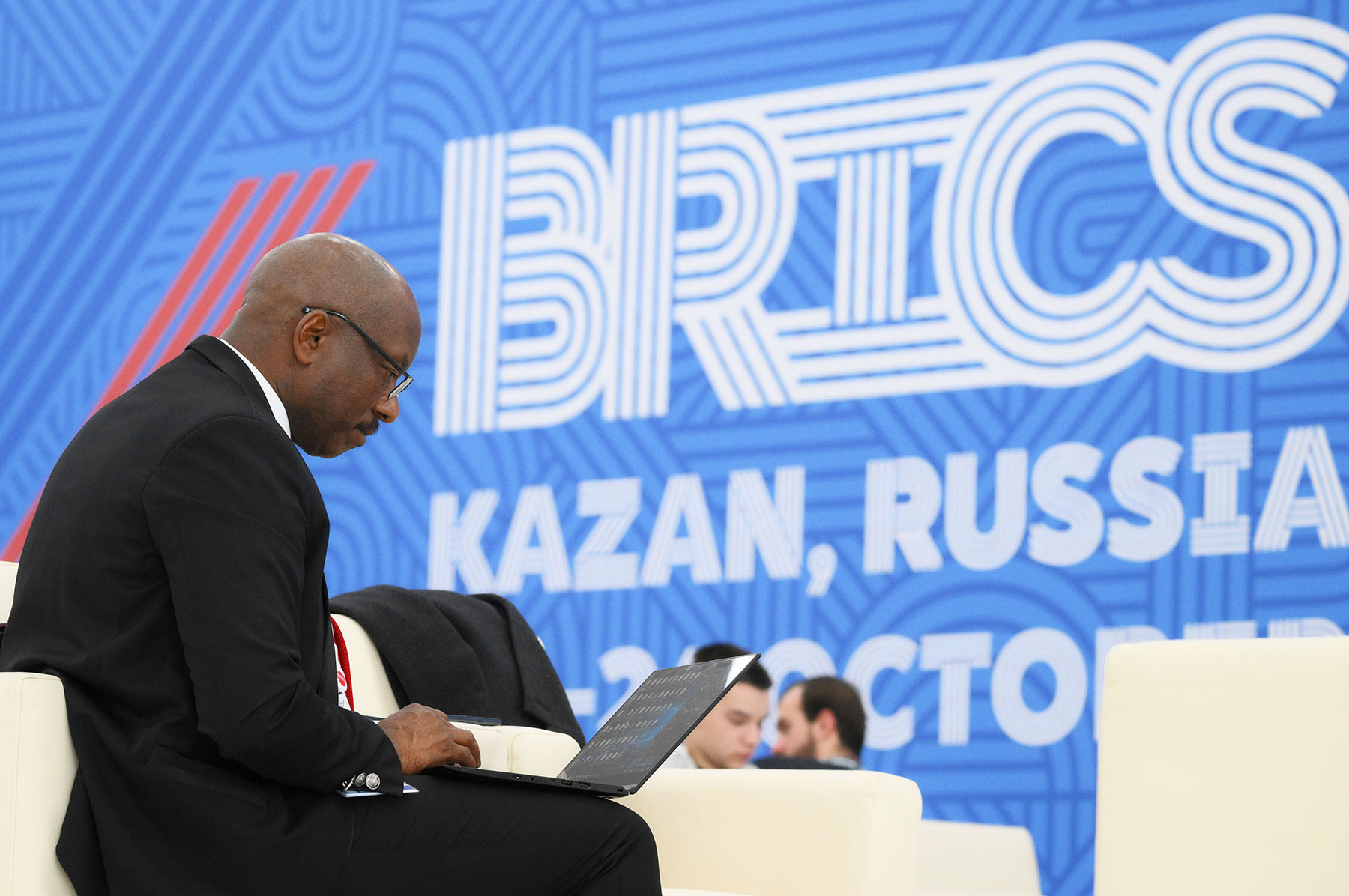
The Future Belongs to Inclusive Groups Like BRICS
The current state of play of BRICS is highly dynamic and interesting which is why this informal group has gained so much attention from policy spheres and political analysts all around the world. However, the internal dynamics of the group can be understood through several key aspects.
One of the main driving forces and uniting elements behind the BRICS is economic cooperation. These nations trade widely among themselves and have diverse/different modes of economies. They collaborate to encourage investment and trade between member nations, and they frequently talk about how to lower trade barriers and improve economic integration. There is also talk within the group—which also took place during the XV BRICS Summit—regarding the use of national currencies to boost commercial activity between members and with countries of the Global South. BRICS member states have also discussed the idea of introducing a common BRICS currency as well. However, the progress on this front has been rather slow and has hit some major roadblocks pertaining to several geo-political, economic and structural factors.
In the domain of political cooperation, BRICS members continue to hold annual summits and discuss a wide range of political issues which include regional disputes, international security, and global governance. Member states also publish joint statements or communiques on these topics as well. The Johannesburg Declaration is a good example of this, which was jointly released at the conclusion of XV BRICS Summit. In addition, members regularly coordinate their stances on multiple international political issues. On issues like global warming, international peace and security, and reforming organizations like the United Nations and the IMF, they seek common ground regularly.
In the sphere of economic development, each member has its own unique economic development challenges to overcome. While China and India have experienced rapid economic growth, members like Brazil and South Africa have experienced economic slowdowns combined with domestic political instability. Moreover, Russia has also experienced massive economic slump after getting hit by Western economic sanctions imposed after the commencement of the Russia-Ukraine conflict. Such developments, while presenting their own respective challenges to BRICS, also provided some opportunities for the group as well, with members trying to jointly respond to challenges and capitalize on the presented opportunities collectively as well as individually.
Furthermore, South-South cooperation, or collaboration between developing nations, is a BRICS priority, among others. The member countries collaborate to exchange best practices and support global development projects, notably in Africa. As it was evident during XV BRICS Summit, where according to President Ramaphosa, over 30 heads of state from African countries as well as others from the Global South were invited to the Summit. The leaders from African countries and other leaders from the Global South were hosted at the BRICS-Africa Outreach and BRICS+ Dialogue to have an inclusive dialogue on issues affecting developing economies and identify actions that can be taken collectively to achieve a more equitable, inclusive and representative world.
Apart from formal meetings and summits, BRICS leaders participate in informal dialogue, allowing for more open discussions on numerous problems. These unofficial exchanges promote collaboration and assist member states develop confidence and trust with each other.
Most important of all, the dynamic of geopolitical interests is probably one of the most influential of all among BRICS’ state of play factors. While the BRICS countries share many interests, they also have different geopolitical, geo-strategic interests which are occasionally divergent.
For instance, the long-standing geo-strategic competition and border conflicts between China and India, and Russia's activities in Ukraine have strained its ties with Western countries which obviously have ramifications for rest of the BRICS members in multiple ways.
The visible tilt of India towards the United States and Europe, especially in the geo-political and geo-economic sense has had its negative impact on Indo-Russia relations. Moreover, the recent up-gradation of Sino-Russian relations to strategic level have stressed the “most privileged and strategic partnership” between India and Russia.
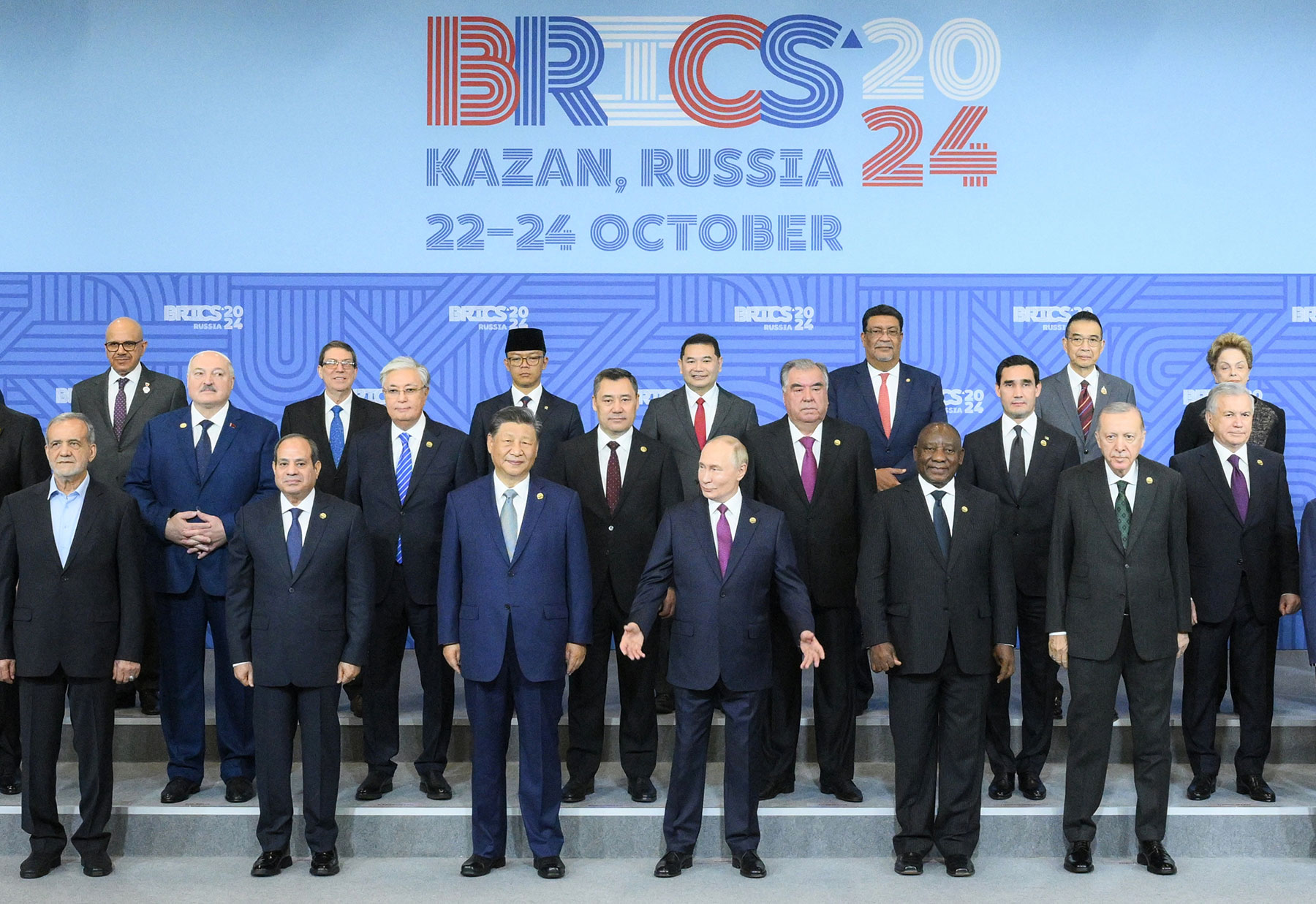
The Kazan BRICS Declaration — a New World Order Manifesto
The relatively closed capitalist markets of China, the unprecedentedly Western-sanctioned economy of Russia, combined with India’s increasing bonhomie with the West and the United States in particular, as well as New Delhi’s enhanced desire to continue trading in the US dollar are some of the reasons why the idea of a common BRICS currency is unable to gain any meaningful traction so far.
Moreover, it is also important to understand that after the inclusion of six new members into the group, BRICS was no more; instead, a new form was created—BRICS Plus (+). This new form brings its own opportunities and challenges for the group.
On one hand, where the addition of new members into BRICS will add to its geopolitical, geostrategic, geoeconomic clout and material strength. On the other hand, with expansion of voices, more challenges will surface in the group, especially for the consensus-based decision-making within BRICS due to diverging interests of different members. The creation of a larger organization with no Secretariat so far and no legal authority over decisions might further complicate matters within the group.
However, a multi-year study conducted by a group of Canadian and Russian think tanks indicated that despite the absence of any legal authority or mode of compliance assurance at BRICS, the average compliance rate regarding policies and decisions was 72% in 2020, which was mainly complemented by the introduction of the IT-related (information technology) agenda to BRICS in 2015, which might assist in taking this percentage even higher in the coming years.
Although, as mentioned earlier, the group does hold informal and formal discussions and consultations to reach common ground on issues, an increase in members might make it more challenging to reach an across-the-board consensus on various matters. However, this will also provide an opportunity for middle-power countries, especially non-Western ones to have a platform to have open and candid internal discussions regarding their issues without Western participants and interference and come up with indigenous, customized solutions according to their requirements.
Furthermore, BRICS and especially BRICS Plus, now have several members that either have a difficult or a hostile relationship with the West, particularly the U.S.—e.g. China, Russia, Iran, and to a certain extent Brazil and South Africa, especially under their current leaderships. On the other hand, there are other members of the group that enjoy warm or at least good working relations with the U.S. and EU such as India, KSA, UAE, and Egypt.
Such a dynamic, where member countries will have to maintain an intricate balance between BRICS commitments and their respective relationships with Western partners will be a profound challenge for BRICS, as far as handling discrepancies and maintaining effective functioning unity of the group is concerned.
Therefore, in the backdrop of the current geopolitical environment, the times ahead for BRICS (now BRICS Plus) seem to be extremely challenging. They will present their own unique challenges and at the same time opportunities. Multiple underlying factors and dynamics will influence the group's collective response and behavior towards these challenges and opportunities. However, it will ultimately depend upon how each country views its interests individually within and without the group, which will determine BRICS collective action and future trajectory.
Should Pakistan Join BRICS?
The short answer would be a definite yes. Pakistan should apply and go for BRICS membership. However, it is also extremely pertinent to understand the reasons behind this affirmative in order to logically and pragmatically justify the assessment.
The burgeoning influence of BRICS on the international stage, facilitated by the growing economic might of its members—their substantial populations and abundant natural resources—have made it one of the best options for developing countries, especially those from the non-Western world, who want to reduce their dependence on traditional global financial institutions and find an agency where they are enabled to have a much greater share of global influence in the realm of international politics.
As of 2023 data, China (#2), India (#5) and Russia (#8) are among the world's top ten economies (See Figure 3).
Figure 3. Top ten economies, GDP based on PPP, share of world (Percent of World)
Source: World Data Info, 2023 [3]
All BRICS countries, due to their increasing economic influence, are becoming drivers of global economic growth. While quoting IMF data, Bloomberg reported that by 2028, BRICS countries will contribute close to 40% of global economic growth. As of April 2023, compared to the G7’s (Group of Seven) share of global GDP at PPP—which stood at 29.9%, BRICS members’ share in global GDP collectively—accounted for 32.1% (see Figure 4).
Figure 4. G7 and BRICS member state share of global GDP at purchasing power parity
Source: Compiled by Statista based on data from IMF World Economic Outlook. [4]
In 2000s, G7 made up approximately 50% of global GDP at PPP, while BRICS was contributing just below 10%. Now, with 6 additional members, BRICS represents almost half of world’s population (55.75%) (See Figure 5) and its share in the global GDP at PPP (in comparison to the G7 during the same period) is approximately 35% (34.92%) (See Figure 6).
Figure 5. IMF Data Mapper, Population (Millions of people)
Source: IMF, World Economic Outlook (April 2023) [5]
Figure 6. BRICS plus Countries share in Global GDP at PPP
Source: Data generated from the Statistica, 2024 [6]
Moreover, according to the UN Conference on Trade and Development report, foreign direct investment (FDI) has significantly contributed to the growth of BRICS economies since 2001, with annual FDI inflows more than quadrupling from 2001 to 2021. According to World Bank data, BRICS nations received $287.3 billion USD in net foreign direct investment in 2022, representing a 16% world share.
According to the World Trade Statistic Review 2023, BRICS member combined merchandise exports totaled US$5 trillion in 2022, accounting for 20% of global commerce.
The NDB has already approved over 96 projects worth US$ 32.8 billion for supporting infrastructure projects in member countries.
In addition, BRICS members are active members of leading international organizations and agencies where they carry substantial clout such as the UN, G20, WB, and IMF. They had 14% of the total votes at the World Bank as of July 31, 2023, and 15% of the quota share at the IMF as of August 8, 2023.
In light of the latest data stated above, from geopolitical, geostrategic, economic and diplomatic perspectives, BRICS seems to be an appropriate forum for Pakistan to be a part of.
Since the beginning of the Russia-Ukraine conflict—a defining conflict in the contemporary era—there has been a massive weaponization of economic and financial institutions by the Western world.
In the past, economic sanctions and economic coercion via international financial institutions (IFIs) like the World Bank (WB) and the IMF by the West were usually used against middle-power or smaller states such as Iran, Iraq, Libya, Ethiopia, North Korea and Syria to name a few. However, after the Russia-Ukraine conflict, economic sanctions and coercion have been used to target major powers and strong emerging economies such as Russia, China, and Turkey. [7]
These actions led to a sense in the developing world, especially in non-Western states to search for alternatives to the structures created under the Bretton Woods system to sustain their respective economies and have durable and safe mechanisms to continue their commercial activities and trade with minimal interference or influence from the “developed” Western countries. This is where organizations like BRICS, SCO, ECO and ASEAN (and the financial institutions under their umbrellas) came into existence and compelled small and middle-power states to go for them.
In addition, after the commencement of the Russia-Ukraine conflict, small and middle-power countries have extensively gravitated to organizations like BRICS and the SCO as alternatives because they do not want to bracketed into any particular bloc, hence increased interests of countries towards such groups which provide safe options for them to carry out their neutral foreign policies without fearing economic and diplomatic isolation.
Therefore, for an emerging economy like Pakistan, which is a member of the SCO, it is a suitable option to join a dynamic organization like BRICS due to its growing political, economic and diplomatic potential which will definitely be beneficial for Pakistan’s short and long term interests, and help in making its much-desired shift from geo-strategy to geoeconomics.
Moreover, by becoming a part of BRICS, Pakistan would be able to expand its diplomatic influence, open lucrative trade and investment opportunities and get access to vast natural resources like oil and gas. Especially after addition of new members, BRICS members will cover half of the world’s oil and gas resources, according to the U.S. Energy Information Administration data.
Table 1. Top 10 largest oil producers and share of total world oil production, 2022
Source: U.S. Energy Information Administration, International Energy Statistics, as of May 1, 2023 [8]
*Oil includes crude oil, all other petroleum liquids and biofuels
**Production includes domestic production of crude oil, all other petroleum liquids and biofuels and refinery processing gain.
With regards to food production, BRICS countries contribute almost half to the global food production, with 4 of its members being the top food producers in the world, including China, India, Brazil and Russia.
Hence, Pakistan, being a country facing acute food and energy shortages, will greatly benefit by having access to massive energy and food markets by being a part of the BRICS organization.
By joining BRICS, Pakistan will have access to mobilized funds and resources allocated by the NDB for different sustainable development projects that Pakistan critically needs. Also, by becoming a member of the NDB, Pakistan will have alternatives to the Western-created and dominated creditors like the IMF and WB. This will definitely lift off substantial pressure from Pakistan’s policy and decision-making which it had been facing since long as well.
Additionally, as the practice of dealing in national currencies among the BRICS members and with other emerging economies get more strengthened, Pakistan’s trade (as a member) within BRICS will benefit as well and reduce its dependence on the U.S. dollar (reserves of which are already dwindling and effecting the value of Pakistani Rupee—PKR).
Collaboration with other members within the group on various BRICS agendas and commitments (as a member) will benefit Pakistan’s overall national profile and image and help in fulfilling much of its Sustainable Development Goals (SDGs) efficiently such as climate change, women empowerment, and environment protection among several others.
Pakistan’s membership of BRICS also makes sense because the “BRICS Spirit” and almost all of the BRICS main objectives completely align with the aims and principles that Pakistan actively pursues as well, from inclusive multilateralism, fostering environment an environment for peace and development to partnering for mutual growth.
Challenges for Pakistan in joining BRICS
As mentioned in the previous section, acquiring BRICS full membership will greatly benefit Pakistan and present great opportunities. However, Pakistan’s BRICS membership also faces its unique set of challenges. They include:
- The first and foremost challenge to Pakistan’s BRICS membership is India’s opposition to Pakistan’s inclusion in the organization. Given the current state of bilateral relations between Pakistan and India, and orientation of India’s current government under the Bharatiya Janata Party (BJP), Indian opposition to Pakistan’s BRICS membership is sure to come. Since BRICS is an organization that functions on the basis of unanimous decision-making or across-the-board consensus by all members to agree on any matter or issue (as mentioned earlier), it would be a profound challenge to get Pakistan’s membership approved into BRICS with India’s opposition.
- Another challenge for Pakistan in joining BRICS is to efficiently handle to political and economic pressure that Pakistan might face from its Western partners, particularly the United States and European Union, who perceive BRICS as an organization that was created as a counter-weight to Western-created global financial institutions and challenge the global influence of the U.S. dollar. Hence, Pakistan can expect political, economic and diplomatic pressure from these circles if it actively pursues BRICS membership. Since Pakistan’s weak economic position and its dependence on traditional IFIs like the IMF and WB have been used against it as a coercive tool in the past, it is highly probable that similar pressure tactics can be used in this case as well.
- Pakistan is currently facing a plethora of issues that range from political instability, economic stagnation, militancy, climate change to food and energy insecurity. Countries like India within BRICS will try to use these issues against Pakistan in order to weaken its case in front of other members in the group which can pose a serious challenge to Pakistan’s membership.
- Political stability in Pakistan and consensus among all relevant stakeholders is extremely necessary before approaching BRICS for full membership. If political stability (domestically) and consensus does not exist, it can become a challenge for Pakistan’s membership as the strength and efficiency for its bid to join BRICS can critically weaken with rise in political instability or a change of government in the country.
- Besides India, there are also chances of other countries might give into the pressure from external forces and block Pakistan’s entry into BRICS, forces that are antagonistic towards Pakistan. For example, this can include countries within BRICS that still owe a substantial debt to the IMF or countries who own money to the U.S. or have substantial U.S. foreign direct investment into their economy.
More challenges can surface as the international environment inevitable changes in the coming months and more developments take place in the global political arena. However, the above-mentioned challenges seem to be the most significant so far.
Recommendations
The case for Pakistan to join BRICS is strong. However, there is still a lot that needs to be done in order to make Pakistan’s bid undeniable. The following are some recommendations for Pakistan when making its case for BRICS membership:
- Despite of India’s expected opposition to Pakistan’s BRICS membership, Pakistan should continue to make its case as a capable candidate. To constantly and repeatedly oppose Pakistan’s case for BRICS membership, India will have to spend its political capital within the group which will ultimately run out and fatigue may overtake BRICS members. Therefore, Pakistan should never give up on building its case consistently and with credibility for BRICS membership as consistency pays and credibility gives strength.
- To counter India’s efforts to weaken Pakistan’s case in front of other BRICS members, Pakistan will have to conduct an aggressive diplomatic campaign to lobby all members of BRICS to vote in favor of Pakistan and convince India to let Pakistan in BRICS for the larger benefit of the organization.
- However, before any such diplomatic effort, Pakistan needs to undertake important measures for internal balancing to address all the issues and concerns to compliment the merit of Pakistan’s membership case, as well as avoid issues and concerns that may been viewed as weaknesses and be used against Pakistan.
- Pragmatic assessments of Pakistan’s national capacity and capabilities must be made before joining BRICS. This will help Pakistan avoid making commitments which the country would find hard to fulfil later, restrict its policy maneuverability/freedom or infringe upon its interests.
- Pakistan will have to play on its strengths such as increase its agriculture and food production output plus quality. This will help Pakistan’s case for membership as it will show case that it will substantially contribute to the collective output of the group and is capable of commercially dealing in commodities with other members. This will also help Pakistan even after it secures BRICS membership because it will present Pakistan as productive and valuable member of the group that can complement the overall capacity of the organization.
- It is also highly recommended to work on strengthening the national currency—PKR, as it will aid in smoothly dealing in national currencies with other members for commercial purposes.
- Besides working on the existing strength areas of Pakistani exports, the overall export portfolio also needs to be expanded extensively and move towards product specialization will also have to be made to compete with bigger economies within the group and avoid becoming commercially redundant.
- Policy consistency will have to be ensured on every level. This will boost confidence of other BRICS members on Pakistan as a potential candidate for BRICS and will generate economic and political dividends even after becoming a member of the organization.
- Pakistan should immediately apply for NDB membership, even before it formally applies for BRICS full membership. NDB is the first global multi-lateral financial institution initiated completely by developing states. As per NDB rules, its membership is open to all members of the United Nations. Since Pakistan is a member of the UN, it is naturally eligible to apply to the NDB. Being an NDB member will definitely complement and strengthen Pakistan's full membership case into BRICS as well.
- Pakistan should immediately begin internal deliberation on the highest policy level to embark on attaining BRICS membership as soon as possible. The bas about the Senate Standing Committee on Foreign Relations being briefed by the Ministry of Foreign Affairs of Pakistan officials about Pakistan exploring possibilities of joining BRICS and the start of consultations with relevant stakeholders is encouraging, however, this process needs to be further sped up and related tasks undertaken on an urgent basis.
Conclusion
Despite concerns of a few members, several geopolitical factors have driven BRICS to expand. This trend, which officially began during the XV BRICS Summit in 2023, will most probably continue for the foreseeable future. However, it is imperative for Pakistan to capitalize on this opportunity before this window is no longer available.
It will be beneficial for Pakistan to join BRICS as the group reflects the changing contemporary power dynamics and economic realities. BRICS is going to shape geopolitics, and it would be remiss if Pakistan misses the window of opportunity to join the organization, especially when majority of its members have openly stated that they are ready to welcome all promising members who fit the bill to join BRICS.
The addition of six new members into BRICS is a window into its future orientation. In comparison to the new inductees, Pakistan’s chances of being accepted into the group are extremely bright, provided it effectively fulfils all the criteria and advocate its case consistently, with good merit and strong credibility in a timely manner.
1. Shareholding // New Development Bank. URL: https://www.ndb.int/about-ndb/shareholding/
2. BRICS Plus members’ share in Global GDP at Purchasing Power Parity // International Monetary Fund (IMF). September 22, 2023. URL: https://www.imf.org/en/Publications/WEO/weo-database/2023/April/weo-report?c=213,223,924,469,644,534,429,922,456,199,466,&s=PPPSH,&sy=2009&ey=2028&ssm=0&scsm=1&scc=0&ssd=1&ssc=0&sic=0&sort=country&ds=.&br=1
3. The World's Largest Economies // World Data Info. September 15, 2023. URL: https://www.worlddata.info/largest-economies.php
4. Richter, F. The Rise of the BRICS // Statistica. August 22, 2023. URL: https://www.statista.com/chart/30638/brics-and-g7-share-of-global-gdp/
5. World Economic Outlook // IMF, 2023. URL: https://www.imf.org/external/datamapper/LP@WEO/ARG/BRA/CHN/ETH/IND/IRN/RUS/ZAF/ARE/SAU/EGY?year=2023
6. BRICS and G7 countries ‘share in the world’s total GDP in PPP from 2000 to 2024 // Statistica, 2024. URL: https://www.statista.com/statistics/1412425/gdp-ppp-share-world-gdp-g7-brics/
7. Fatima Hussein, “US sanctions 398 firms in more than a dozen countries, accusing them of helping Russia’s war effort”, Associated Press (AP), published on October 30, 2024. URL: https://apnews.com/article/treasury-sanctions-finance-russia-ukraine-92d32f9041d24d371d8afb89d4df603...
8. What countries are the top producers and consumers of oil?// U.S. Energy Information Administration, 2023. URL: https://www.eia.gov/tools/faqs/faq.php?id=709&t=6
(votes: 1, rating: 5) |
(1 vote) |
The true potential of Russia–Pakistan relations lies in their ability to adapt to changing geopolitical realities while maintaining a focus on shared interests
The Growing Potential of Russia-Pakistan Trade RelationsConcrete Recommendations for Both Governments
The Kazan BRICS Declaration — a New World Order ManifestoBRICS intends to turn itself into one of the most articulated voices of all the Global South, which so far remains grossly underrepresented within most multilateral international institutions
BRICS Expansion and Prospects for BRICS Cooperation in the Digital EconomyPolicy Brief #54 / 2024
The Future Belongs to Inclusive Groups Like BRICSThe future belongs to new flexible, inclusive mechanisms rather than to old, rigid hierarchical blocks


